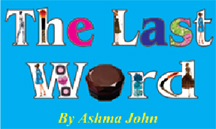Have you ever reflected on why you like the things you like and how are they tied to your social values and history? I never used to question why I liked the things I like and for as long as I could remember I had always been in love with the style of the women of the British monarchy. Princess Diana was my personal favourite! In fact, I held the style advice from European fashion influence paramount to any. Vogue and Elle magazines always gave me an immense amount of satisfaction even though I could only dream about having some of the pieces. I never stopped to wonder why I liked them though.

Peter Shand, in his cultural analysis paper, ‘Scenes from the Colonial Catwalk: Cultural Appropriation, Intellectual Property Rights, and Fashion’ concluded: “All manner of tangible cultural heritage of indigenous peoples (from design patterns to artifacts to body parts, even the people themselves) were looted, stolen, traded, bought, and exchanged by colonials of every status (from Governors General to itinerant sealers). These were studied, admired, looked at, and forgotten; created manias of taste and connoisseurship or never saw the light of day again, whether in the private houses, the palaces, or the museums of Empire. Because of their display, they became available for appropriation into the cultural language of the very colonizers who had initially dislocated them.”

However you choose to digest that piece of information is entirely up to you.
Our colonized past affects the way we consume and appreciate fashion. Through colonization there was a systematic way of creating hierarchies through fashion. I believe it was probably one of the integral moments in history where segregation by using fashion to differ between the classes was evident. Whilst it aided in inducing power, it in turn challenged the way we conceptualized fashion. Perhaps this is one of the reasons why we look to Europe for style guidance and not to ourselves. We have become so accustomed to the rulings of another man that we have become indoctrinated into not trusting our own sense of style.
In colonial times, the masters would have also dominated the lands and taken ownership of everything in every sense. Has this past become reflective of what we deem as success, wealth and beauty?
I remember reading somewhere of Bill Cosby’s attack on underprivileged black people in the US about their irresponsible spending habits; he used an example of how they would rather buy their children $300 sneakers, than teach them to speak proper English. While there are no exact statistics to prove shopping habits according to race in detail, I can’t shake the obsessive consumerism culture that I sometimes see. Could our colonial past have influenced the way how we consume, in order to fulfil psychological gaps? Have we developed an obsessive consumerism culture so that owning material possessions somehow proves our stature?
From an industry angle, Europe has been able to explore fashion aesthetically and grow its fashion industry’s economic glory. Colonisation gave Europe a remarkable advantage over many, but more so it paralyzed our style; we are followers for the most part.
Can the Caribbean really become a creative fashion hub with other places miles ahead? Can we really find identity, even when cultural appropriation seems is more or less acceptable and sometimes not even recognized.
From a consumer point of view, I wonder if we will ever be passionate about buying local and taking ourselves seriously. Everything seems to be moving so quickly that it almost seems okay to not stop and think.
The way we dress and consume is truly a reflection of the ideologies and values that have influenced our lives and it is a saddening thing to reflect on sometimes. Who would have ever thought that clothing could possibly have such an effect on us?
Recently, I haven’t been buying so much, because I am taking time to reflect on why I like what I like. You can say that I’m trying to make cerebral decisions when it comes to my clothing. I have been obsessed with activist and singer Nina Simone for a very long time. I recently saw her documentary and she always wore the most beautiful hats and turbans. I suppose my love for hats does stem from admiration of the British hat culture and my desire to own hats is reflective of its association with a power image, but my style has been copied from a woman who helped me to understand the head and identity under the hat.




